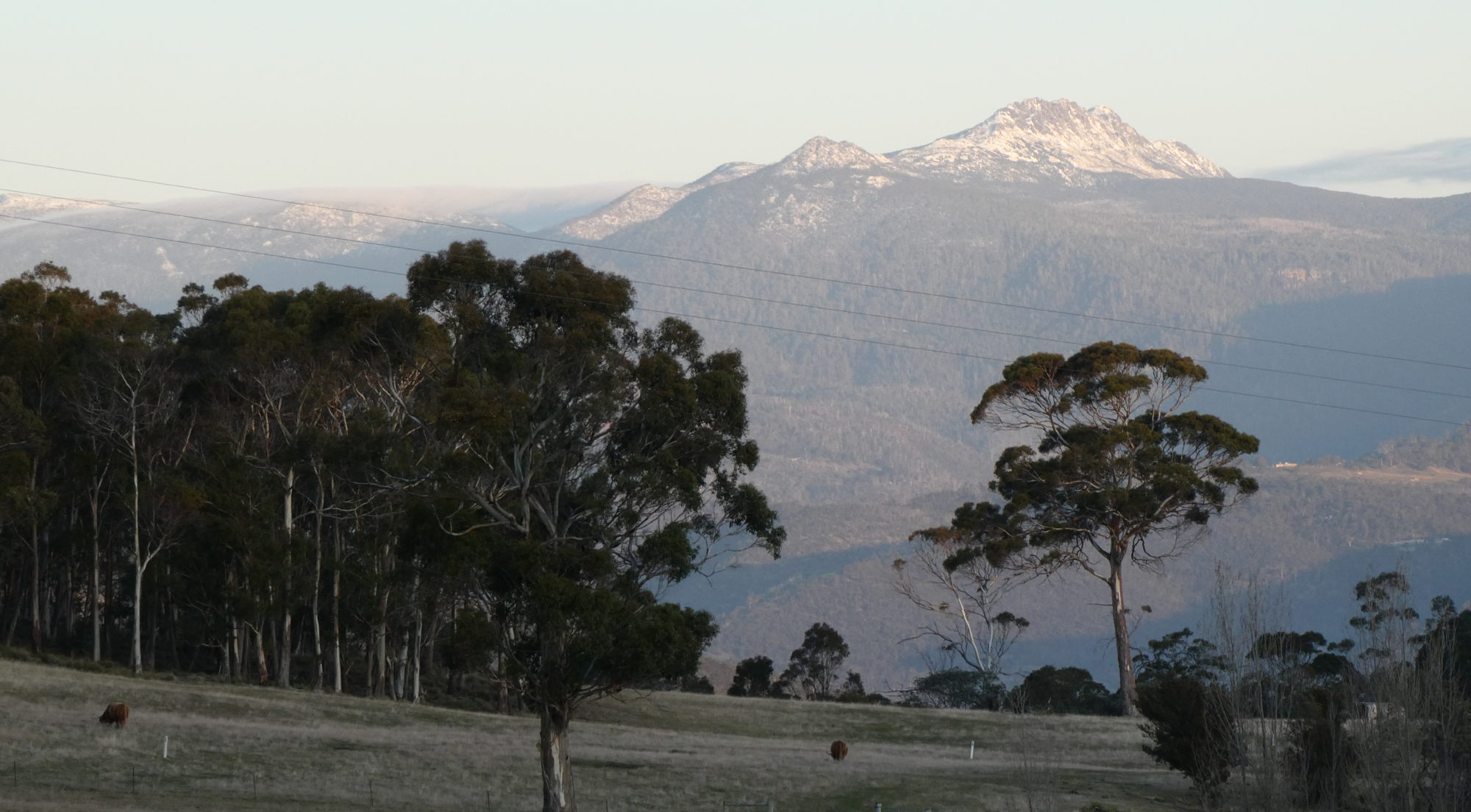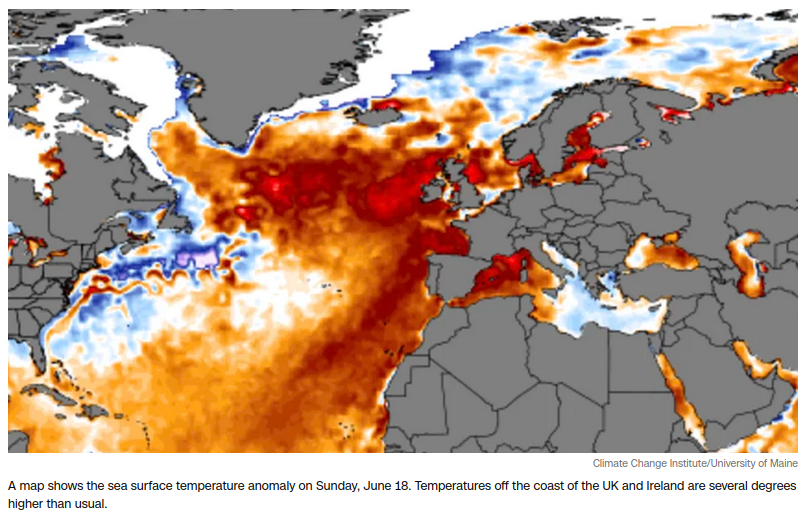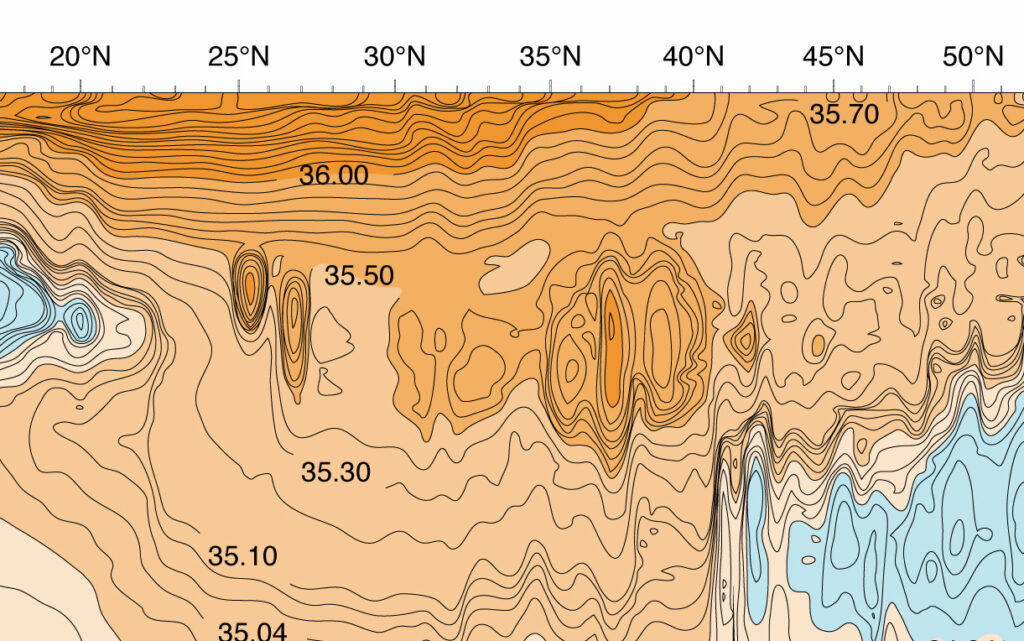Scientific consensus is maintained by the editors of peer-reviewed journals. It is their function to ensure that a submitted paper meets the criteria of the journal. In this they have absolute control. It presents huge opportunities for corruption, both noble cause corruption and the old-fashioned venal sort. Papers critical of the existing consensus never make it to peer review let alone publication. Furthermore, it means any cross-disciplinary explanation for an observed phenomenon is never going to make it because it won’t fit the said criteria. An example is the role of ocean floor volcanoes in mixed layer heating; too much oceanography for for a geology journal and too much geology for an oceanography journal. As a result the smoking gun of the temperature anomaly observed in June 2023 in the North Atlantic was ignored by all the journals. Besides we all know climate change is the origin of all ocean warming. No journal editor is going to risk being labelled a denier by acknwledging the possibility of an alternative explanation.
Between May and August 2023, the sea surface temperatures of the North Atlantic Ocean and some of its adjacent seas rose by 4 deg. C. At first sight it looks as if Climate Change has finally struck with a vengeance. But is that indeed the case? Have greenhouse gases in the atmosphere risen to such a degree that catastrophic warming is now upon us?
There are good reasons to think it has not.
Firstly this temperature increase has happened quite suddenly, within a couple of weeks, whereas greenhouse gas concentrations have only increased slowly over decades. There has been no recent sudden spurt.
Secondly, let’s look at Local Climate Sensitivity ( Reid and Nielsen, 2022). Climate Sensitivity is defined as the number of degrees Celsius in warming which would be caused by doubling the CO2 content of the atmosphere.
The above map of LCS was derived from observation not modelling. Generally over most of the World’s oceans LCS is about 2. There are two regions where it is much greater than 2, viz.: Northern Canada and Northern Siberia, where the atmosphere is cold and dry and CO2 has maximal warming effect. The only place in the world where Climate Sensitivity is consistently zero is the North Atlantic between latitudes 40N and 60N, precisely where the present warming effect is greatest.
Thirdly, there is a better explanation of the present heating event than long wavelength infrared (LWIR) trapping by greenhouse gases, viz.: that the water has been warmed by increased volcanic activity on the ocean floor along the Mid-Atlantic Ridge south of Iceland. There is evidence of such behaviour occurring previously during the field phase of World Ocean Circulation Experiment (WOCE) in the 1990s. Here is the vertical section salinity plot for North-South transect, A16.
The salinity is highly unstratified with large vertical columns implying strong, deep convection between 10N and 50N. This suggests heat sources on the ocean floor such as hydrothermal vents or active volcanoes. This could also account for zero LCS in the North Atlantic, because local warming due to CO2 would be masked by temperature fluctuations due to volcanic effects.
This is not the first time that North Atlantic vulcanism has affected European weather. The eruption of the Icelandic volcano, Loki, in 1783 devastated European agriculture. The ensuing famine may well have led to the French Revolution.
Reputedly, Ireland experienced 20 years of non-stop rain in 2345 BC which may well have been due to persistently high sea surface temperatures similar to the present.
Let us hope that such an event is not about to be repeated.
Links:
https://edition.cnn.com/2023/06/20/europe/marine-heatwave-north-atlantic-climate-scn-intl/index.html
http://whp-atlas.ucsd.edu/atlantic_index.html
https://www.thejournal.ie/rainfall-ireland-noahs-flood-895386-May2013/
North Atlantic Ocean heading towards record





Excellent article. But could the increased volcanic activity arise from the reduction of Greenland ice?
Geoff, maybe, but how could you disprove such an hypothesis?
Thanks John,
Would the perturbation of the ocean currents also not cause some out gassing of CO2 due to solubility changes, or would the total heat contained in that(destratifying) volume not change enough?
The possible causes for the vulcanism are many and intriguing.
For decades i have reasoned that the earths climate is the result of at least two primary sources of energy input; the sun and the interior of the earth.
Cheers,
I discuss the issue of CO2 out gassing from the Mixed Layer here: http://paradigm2.net.au/the-regression-of-atmospheric-concentration-on-carbon-dioxide-emissions/ . My guess is that the effect of the current NA heating will be similar to, and slightly larger than, that due to East Pacific heating which occurs during El Nino.
Given that continents are shifting and there are many tidal changes, even at a diurnal rate, the poles shift and geomagnetic fields in constant change in flux , the ice weight change(along with land stored water mass change… there are many reasons for the crust to buckle. This will also change the relative smoothness of the earth and impact the perceived sea level.
Wow. Good work John. Looks like Iceland’s geothermal resource is assured for a long time!
Guided by the precautionary principle I have been agitating for ages (fruitlessly) for global abstraction of atmospheric CO2 by the citizenry as well as CO2 trapping by major sources. Good idea or waste of time?
CVF
I formed a company with a friend to do just that. We looked for venture capital, but no-one was interested. See http://www.fis-net.com/fis/techno/newtechno.asp?id=39013&l=e&ndb=1
Waste of time and money Claudio. Henry’s Law says that following a perturbation to Henry’s Law equilibrium where CO2 gas is removed from atmosphere, the CO2 gas will be replaced by CO2 emissions from water surface (primarily ocean) in excess of absorptions until Henry’s partition ratio of unreacted CO2 gas in the aqueous surface versus CO2 gas in the air above the surface [CO2(aq)/CO2(g)] is return to the Henry’s Law constant for the local water surface temperature.
Black smokers are relatively rare on the seafloor – afterall they are where modern base metal deposits are being formed ( so much for finite mineral resources)
The sea floor, abyssal zones where significantly warming oceans are happening are the linear – oceanic crust expansion zones best exemplified by Icelandic-style volcanism where the North American and European plates are spreading apart.
In terms of extent, any coarse-scale bathymetric map of the globe gives an estimated combined length of over 40,000 km of active “ridges” with a conservative estimate of 20% hosting substantial volcanism. But plate tectonics demands the entire length of the ridges to be actively spreading at two to four cm pa. In geological terms this is very fast. By definition, some degree of volcanism must be happening along all these sites
The typical style of ocean volcanism is Hawaaian with Muana Loa & Kea being “shield” volcanoes – not typical Fuji/Taranaki cones, but quite pancake-like due to very low viscosity lavas due to their mafic to ultramafic chemistry. The two big Hawaaian volcanoes arise directly from the deep sea floor. They are the tallest mountains in the world when you measure from their bases
As a side issue- the Hawaiian chain of islands( progressively younging to SE) is located on a mantle “hot spot” ( on very thin oceanic crust) . They are not like Iceland which is on a spreading centre
As to our hypothesis of ocean warming due to sub-sea volcanism it is a real shame the RS DISCOVERY aborted her mission when she was in the Heard Island thermal plume
I am very interested in this field of research and hope to stay on top of it..
With the North Atlantic mid-ocean volcanic ridge being well studied since it’s discovery in the 1950, it will be an ideal case history to capture people’s imagination! After all, the MORs provided the key evidence for Plate Tectonics and the concept of spreading oceans first proven in the early 60s
Too true – Ian Plimer has been banging on about this issue for years and is totally ignored, i.e. doesn’t fit “the models”.
It’s certainly frustrating and an unfortunate impediment to the advancement of knowledge.
The interface or boundary environment of the oceans and the earth’s crust is such an important part of the energy flows that impact our lives. Given that many deep sea vents don’t pierce a thermal strata, to me this implies that the heat is accumulated over time and ultimately will impact layers above (at some time or place), potentially with a very much enhanced effect on its own or with a boundary piercing event to initiate it. In any case it reminds me of the atmospheric equivalent of a fire-devil and the various atmospheric conditions even relatively small intense heat sources can cause.
but before you get to the peers you are confronted by a phalanx of juniors endowed with superhuman gifts of perception, and powers to offend, who can say as I recently witnessed that
we give preference to those [MSS] that present significant advances of broad interest. Unfortunately, your manuscript has been declined at this stage, as it was not considered to meet these criteria.
Thanks Claudio. Very much my own experience.